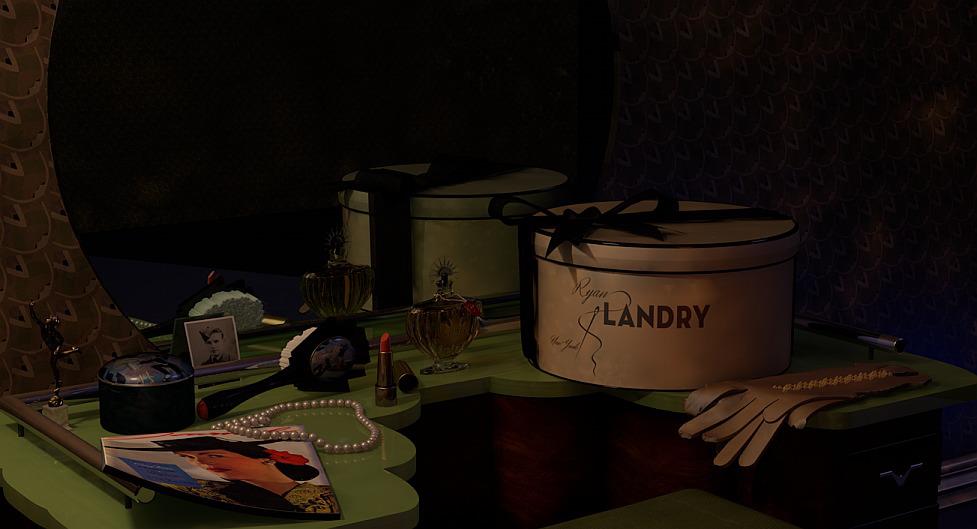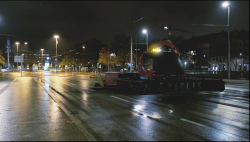-
Posts
1,167 -
Joined
-
Last visited
-
Days Won
8
Content Type
Profiles
Blogs
Forums
Gallery
Pipeline Tools
3D Wiki
Plugin List
Store
Downloads
Everything posted by rasputin
-
From the album: Rasputin's Gallery III
-
Thank you, Cerbera! Does this mean I should always try to build my mesh objects... such that they reflect approximate real-world-settings? ie., a glass of water is 6 inches tall in my Viewport, and my Camera is 2 feet away, Etc?
-
It's like this: I have a fairly complex C4D scene set up, and I want to render it such that only objects in the foreground are in focus. Depth-of-Field, of course! I deploy a camera, have its focal object be the center foreground mesh of my scene. Drag out the line where I want my blur to begin. Turn on DOF in Render Settings and under my Camera's Settings. Then----> RENDER. The picture renders with no DOF. It's not happening, no way, no how. Every object remains sharply focused. I Google and find a discussion online (forget where) which says: Easy-peasy. Whatever your scene's Scale Units are in, bump them down to the units just lower. If you're working in meters, bump your scene's Scale down to centimeters. If you're working in centimeters, bump your scene's Scale down to millimeters." I try this. I bump my scene scale down from cm to mm. And it works! Beautiful rear-blur depth-of-field in my render. My question is: Sure, this works, but why on earth does it work? What principles are going on here? And more dumbly, why can't one set up DOF in the same units as his original scene was designed in? Math was never my strong suit. Thanks, ras
-
I played it. His noodles wiggle after settling, too, but far less than mine do. 😆😆 Thanks for your input... I will experiment with the Damping setting. Thank you, ICM !
-
Dumb n00B here. What's "DCC" ? What's "ICM" ?
- 107 replies
-
- Blender Foundation
- Maxon
-
(and 1 more)
Tagged with:
-
Hey guys, Using the new Rope simulation function in S26, I've succeeded in making a big morass of spaghetti fall convincingly onto my bowl. It looks amazing and functions exactly as it is supposed to. My computer handles this simulation effortlessly, even though the calculations (per each noodle, how it falls and collides) must be very complex indeed. The only thing I can't seem to do... is make the noodles stop wiggling once they have landed in place against a Collider. The noodles continue to wiggle busily in place after they've fallen... for literally hundreds of frames. In physics speak: they never seem to run out of potential energy. I've cranked their frictions setting way up high... but they still wriggle like worms for hundreds of animation frames. What's the trick to get them to stop? Thanks, ras
-
Hey gang, A bit of a dumb n00B question: Sometimes when modeling, you'll conduct an operation that is ill-advised, and the result is these black triangles. I know they mean "this is not good", but I don't know: what causes them exactly if they are fix-able if it means their Normal has been reversed? if they will look wrong when a Material is applied if they are even selectable, once they appear? Can you educate me here? Thanks, ras
-
I see! Hmm...
-

Screenshot 2022-03-17 at 09-33-37 Yoav Parish on Behance.png
rasputin commented on silver's gallery image in Final Renders
-
I ask because I am NOT ! 😄 I have just a fundamental understanding of using Nodes to make actual meshes happen in the Viewport. I don't fully understand where Maxon is "going" with this new approach... What are the advantages of modeling using a complex network of Nodes? Is it designed to speed things up? It feels weird to me not to be "hands on" in modeling meshes, and I assume that this "old-fashioned" approach won't be deprecated anytime soon. The Nodes approach seems awfully cerebral, fussy and confusing to me... but I'm sure that's simply because I haven't grasped all its capabilities (which I'm guessing are vast). I suspect the main virtue of node-based modeling is tied in with MoGraph and doing impressive motion graphics animations, yes? And at some point, all your scenes will be controlled by complex "dopesheets" of verbal and mathematical data? All very "meta", and turning 3D modeling into something more like computer Coding... which is not what I signed up for... I'm a certified idiot when it comes to coding. What am I not understanding here...? Are you excited about this brave new world of "hands off" node-based modeling? Best, ras
-
Wow... Oh yes, I do see now. It would've taken a lot of manual correction to get that smooth curve. I think I would've tried to half-ass it in the past, I dunno, using the Brush in Smooth mode? Nice. I've just tried it... works great. I wonder how it "knows" what curvature to match up to? I've selected the edge that's down in the valley... ie., the part that's discontinuous with the overall curvature. Is that the correct way to go about it?
-
Hey guys, I notice that the new "Poke Polygons" command is very useful for creating "knurling", like the knurling on a bike or motorcycle rubber handlebar grip. The ability to "pyramidize" your polys here, en masse, is only accessible if you use the modeling NODE version of Poke Polygons. Cool! ras
-
10€ per year... or about $12.00 US ? Sure, I can live with that, if it means being able to get prompt answers to the questions I have which are not sufficiently (or clearly) described in the Helpfiles. I do not post here daily or even weekly, but when I do need an answer to a question pronto, because I'm right in the middle of modeling something? Sure, 10€ is absolutely worth it.
-
Hey guys, I'm curious: the new "Smooth Edges" function in S26. What are some modeling or topology instances in which it might be useful? I see that it can take an angular path selection... and make it rounder and more organic-looking. How might this be useful? Thanks, ras
-
Just as an aside to this conversation: As some of you may know, the only way you can get an Adobe Illustrator vector to appear in your Maxon C4D scene as a visible spline... is to export your vector shape as an Illustrator 8 file. If you try to import an illustrator shape from a later or more current Illustrator format, nothing at all will appear in your C4D viewport. Very strange. And Illustrator 8 was, what?, about 13 years ago?
-
Hey gang, Help me to think of the best way to achieve this look with my Material(s), as of R26 : I want the main body of this "softened" cube to be opaque shiny chrome... but I want that protruded area, upper right, to be fully transparent green glass. And I want the segue between the two looks to be perfectly smooth and gradual, not sharp. What is the best/smartest way to make this Material look happen nowadays? Thanks, ras
-
Hey guys, I am current playing around with Dynamics. If you'll look at my screencap here, you'll see I have "hung" a series of glass prisms on a line... to see how they behave when animated (spoiler: they all slide together closely in the middle). But I'm wondering how I can give these glass prisms the same "weight" as they might have in real-life? I'm age 59 and it's been aeons since I studied real-world physics in school. How can I dial in the correct "Mass" or "Density" within C4D to get these glass prisms to move and collide as they would in real-life? Thanks in advance, ras
-
Very similar to e-on PLANT STUDIO. Even fancier, perhaps! And I'll bet the objects created within TAIAO... and your resultant surface cloning... also become very polygon-heavy very fast... and demanding on your computer setup.... Or maybe as it's working within C4D proper, it will not send your CPU + RAM into a tizzy...? Wonder if TAIAO includes a "smart" polygon reduction algorithm... 'cause you'll need it when these plants start becoming exceedingly complex...



